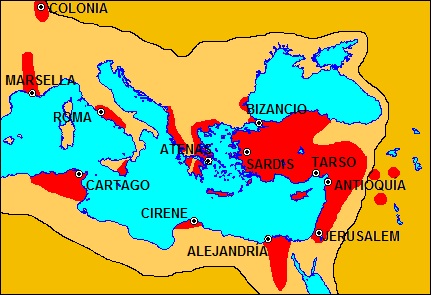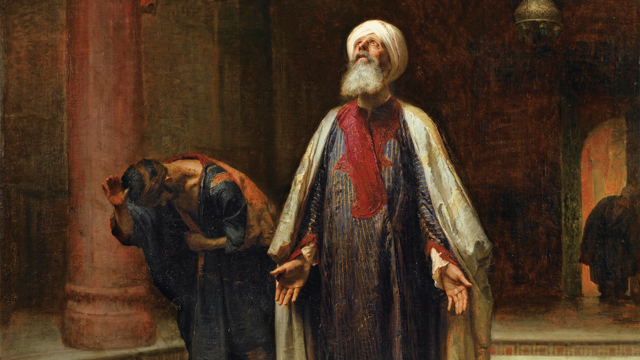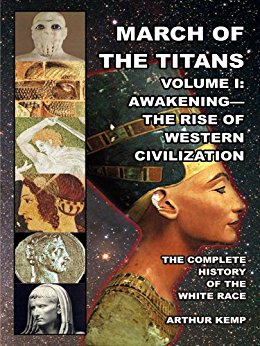by Evropa Soberana
Chapter 3
When Yahweh your Lord brings you into the land you are entering to possess and drives out before you other peoples… when Yahweh has delivered them over to you and you have defeated them, then you must crush and destroy them totally; make no treaty with them, and show them no mercy… This is what you are to do to them: Break down their altars, smash their sacred images, cut down their sacred forests and burn their idols. For you are a people holy to Yahweh your Lord (Deuteronomy, 7: 1-7).
Has not God made foolish the wisdom of this world?… but God has chosen the foolish things of the world to shame the wise, He has chosen the weak things of the world to shame the things which are strong (I Corinthians, 20, 27).
Christianity and the fall of the Empire
On the basis of what happened during this bloody history, there is a laborious process of adulteration, falsification and distortion of religious teachings: firstly, many centuries before Jesus at the hands of Jewish prophets, judges and rabbis; and then at the hands of the apostles and fathers of the Church (St. Paul, St. Peter, St. Augustine, etc.), usually of the same ethnic group. There existed an ethnic base of those conflicts, which we have already discussed in the previous chapters.
The Eastern Mediterranean (Asia Minor, the Aegean, Carthage, Egypt, Phoenicia, Israel, Judea, Babylon, Syria, Jordan, etc.) was formerly a fermenting melting pot for all the good and bad products of the Ancient World: the confluence of all slaves, the downtrodden and banished; criminals, trampled peoples and pariahs of Mesopotamia, Egypt, the Hittite Empire and the Persian Empire. That melting pot, so full of different characters, was present in the foundations and the origins of Judaism. Its vapours also intoxicated many decadent Greeks of Athens, Corinth and other Hellenic states centuries before the Christian era.
When Alexander the Great conquered the Macedonian Empire, which extended from Greece to the confines of Afghanistan and from the Caucasus to Egypt, the entire area of the Persian Empire, the Eastern Mediterranean and North Africa received a strong Greek influence: an influence that would be felt on Asia Minor, Syria (including Judea), and especially Egypt with the city of Alexandria, founded by Alexander in 331 BCE.
This inaugurated a stage of Macedonian hegemony called Hellenistic, to differentiate it from the classical Hellenic (Dorians, Ionians, Corinthians). Alexander fostered knowledge and science throughout his empire, sponsoring the various schools of wisdom; and after his death his Macedonian successors continued the same policy. Many centuries later, in the lower Roman Empire, after a terrible degeneration we could distinguish in the heart of Hellenism two currents:
(a) A traditional elitist character, based in the Egyptian, Hellenistic and Alexandrian schools, which advocated science and spiritual knowledge, and where the arts and sciences flourished to a point never seen before; with the city of Alexandria being the greatest exponent.
Such was the importance and ‘multiculturalism’ of Alexandria—included the abundance of Jews who never ceased to agitate against paganism—as the world’s largest city before Rome, that it has been called ‘the New York of ancient times’. The Library of Alexandria, domain of the high castes and vetoed to the plebe, was a hive of wise Egyptians, Persians, Chaldeans, Hindus and Greeks; as well as scientists, architects, engineers, mathematicians and astronomers from all over the world. The Library stood proud of having accumulated much of the knowledge of the Ancient World.
(b) Another countercultural and more popular current: liberal, sophist and cynical (more freely established in Asia Minor and Syria), had distorted and mixed ancient cults. It was directed to the slave masses of the Eastern Mediterranean: preaching for the first time notions such as ‘free democracy for all’, ‘free equality for all’ and ‘free rights for all’. This was characterised by a well-intentioned but ultimately fateful multiculturalism and cosmopolitanism that enchanted the minds of many educated slaves; by the exportation of Greek worldview and culture to non-Greek peoples, and by the importation of Jewish culture to non-Jewish peoples.
This last current was the Hellenistic background that, disfigured, united with Judaism and the decomposing Babylonian matter, formed Christianity: which, let us not forget, was originally preached exclusively in the Greek language to masses of serfs, the poor and commoners in the unhealthy neighbourhoods of the cities of the Eastern Mediterranean.
The first Christians were exclusively Jewish blood communities, converted into cosmopolitans with their enforced diaspora and Hellenistic contacts. To a certain extent, these ‘Jews from the ghetto’—of which Saint Paul is the most representative example—were despised by the most orthodox Jewish circles.

The Seven Churches mentioned by John of Patmos in the New Testament (Book of Revelation, 1:11): Ephesus, Smyrna, Pergamum,
Thyatira, Sardis, Philadelphia and Laodicea. As can be seen,
all of them located in Asia Minor.[1]
This geographic core is to Christianity what Bavaria is to Nazism: the centre in which the new creed ferments and its expansion is invigorated. This area, so strongly Hellenized, densely populated and the seat of a true ethnic chaos, is where the apostles, in Greek language, were inflated to preach; and here also took place important Christian theological councils (such as Nicaea, Chalcedon or Ancyra).
Christianity, which to expand itself took the advantage offered by the dispersion of Semitic slaves throughout the Roman Empire, represents an Asian ebb spilled all over Europe.
____________________
[1] Editor’s Note: It is very significant that the last word that the Christian Bible confers to an author is the word of John of Patmos. Most likely, the author of the Book of Revelation was Jewish, as his hatred of Rome seems absolute (which he calls ‘Babylon’). The Bible ends with the dream of this John of Patmos about a New Jerusalem just in those days when the Romans had destroyed Old Jerusalem to build, on its ruins, Aelia Capitolina.








